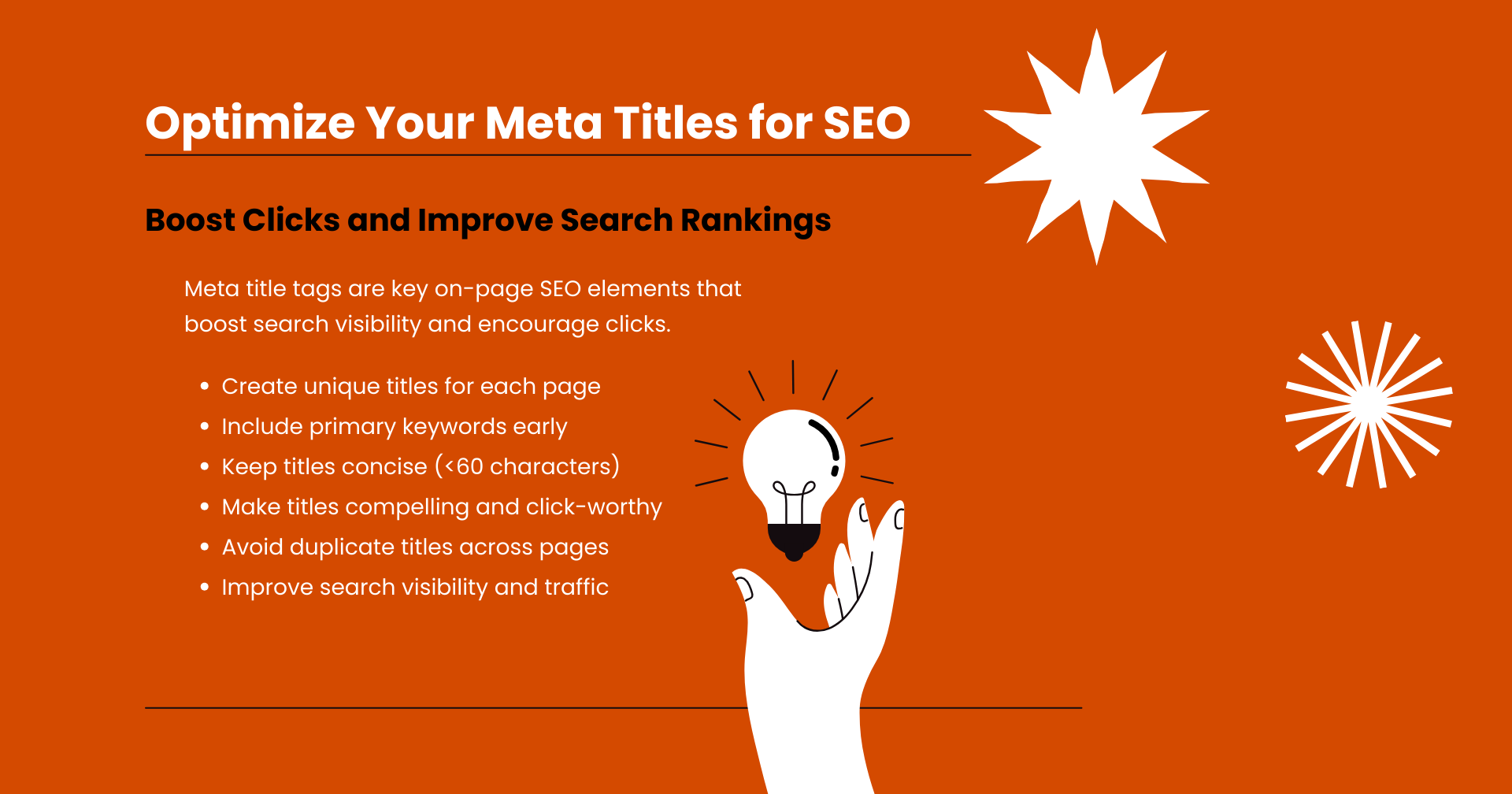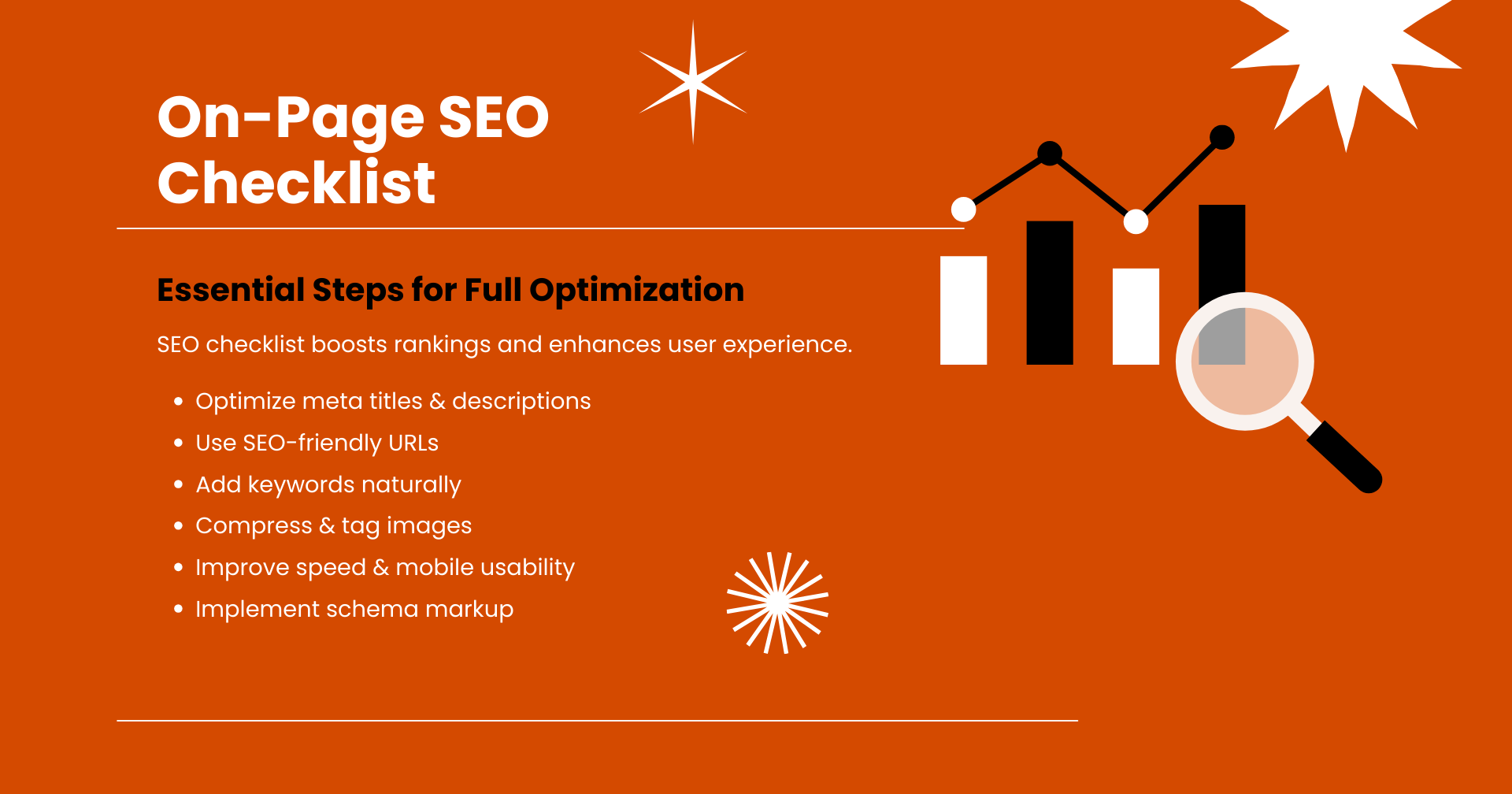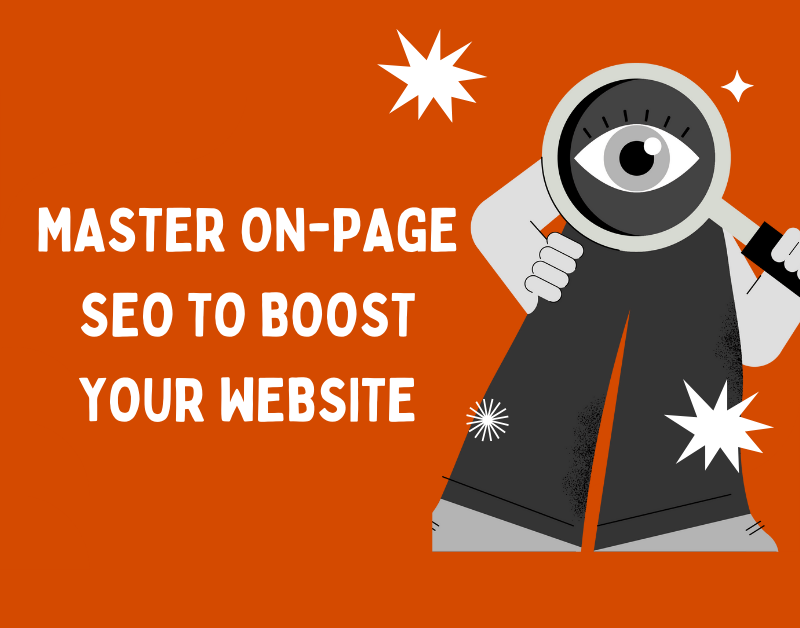Introduction
In today’s dynamic and highly competitive digital landscape, building a strong online presence is more than just a business necessity—it’s the key to long-term success. To capture the attention of search engines and users alike, businesses must invest in professional on page SEO services.
On page SEO services focus on optimizing individual web pages to rank higher and attract more relevant traffic in search engines. Unlike off-page SEO, which centers on external signals like backlinks and social media engagement, on page SEO services deal with factors directly controllable within your website.
This comprehensive guide covers every essential element of on page SEO services—from understanding the fundamental differences between on page vs off page SEO to optimizing meta title tags, managing meta description length, and much more.
Whether you’re a novice or looking to enhance your current SEO efforts, using on page SEO services will equip you with valuable insights to improve your website’s visibility, user experience, and conversion potential.
Investing in on page SEO services is crucial for any business wanting to thrive online, as it forms the foundation for all successful SEO strategies.
Understanding On Page vs Off Page SEO: Why Both Matter
Before delving into the components, it’s important to understand the distinction between on page SEO services and off-page SEO. On page SEO services involve all activities performed directly on your website to make it search engine-friendly.
This includes optimizing content, meta tags, URL structures, internal linking, site speed, mobile responsiveness, and more. The main goal of on page SEO services is to ensure your website is accessible, relevant, and easy to navigate for both users and search engine crawlers.
In contrast, off-page SEO refers to efforts outside your website, such as acquiring backlinks, social media marketing, and building your brand’s authority through online mentions. While off-page SEO improves your site’s reputation, on page SEO services form the foundation by preparing your website to be ranked effectively.
Without a solid on page SEO services foundation, off-page strategies may have limited impact because search engines won’t fully understand or trust your site. Successful SEO requires balancing both approaches, but starting with effective on page SEO services is essential for lasting results.
The Impact of Meta Title Tag Optimization on Search Engine Rankings
One of the most influential elements in on-page SEO is the meta title tag. This HTML element defines the title of a web page and appears as the clickable headline in search engine results. It’s often the first thing potential visitors see, making it a powerful factor in attracting clicks and improving rankings.
A well-crafted meta title should be concise, typically under 60 characters to avoid truncation. It should include the primary keyword—such as on page SEO services—near the beginning to signal relevancy to search engines.
For example, a page targeting on page SEO services might use a title like “Professional On Page SEO Services to Boost Your Website.” The meta title should accurately represent the page’s content while also compelling users to click through.
Unique meta titles for each page on your website are essential to prevent duplication issues. This helps search engines distinguish between different pages and improves overall site SEO.
Neglecting to optimize your meta titles with on page SEO services can result in lost traffic and diminished search performance.

Why Meta Description Length Matters for User Engagement
While the meta description length does not directly affect your search engine rankings, it significantly influences click-through rates.
Meta descriptions are brief summaries that appear below the meta title in search results. They give users a quick glimpse of what the page offers. Search engines usually display between 150 and 160 characters on desktop devices, and slightly fewer on mobile. Keeping your meta descriptions within this range ensures the full message is visible and impactful.
An effective meta description should include relevant keywords naturally, such as on page SEO services, provide clear value propositions, and encourage users to visit your site with actionable language. For example, a well-written description might read: “Increase your site’s visibility and traffic with expert on-page SEO services tailored to your business needs.”
Descriptions that are too long get truncated, potentially cutting off important information. On the other hand, very short descriptions may not fully engage potential visitors. Writing compelling meta descriptions within the recommended length is key to attracting qualified traffic and boosting your on page SEO services success.
How Meta Description Examples Can Inspire Better Copywriting
When learning to write effective meta descriptions, examining strong meta description examples can be very helpful.
Successful descriptions clearly communicate the benefits and relevance of the page content. They incorporate keywords naturally, including on page SEO services, and often include a call to action to encourage user clicks.
For instance, a meta description for an SEO services page might say, “Unlock your website’s full potential with our customized on-page SEO services that improve rankings and drive traffic.” Another example could be, “Discover proven strategies for optimizing your website’s meta tags, content, and URLs to boost your search engine performance.”
Such examples show how to balance keyword inclusion with persuasive language that addresses user intent. By studying and emulating effective meta description examples, you can enhance your ability to write snippets that attract and convert visitors while boosting your on page SEO services results.
The Importance of a Clean SEO URL Structure
A well-designed SEO URL structure is crucial for both search engines and users. It helps improve your website’s crawlability, user experience, and overall SEO performance. Paying attention to your URLs is an essential part of effective on page SEO services.
Here are key points about SEO URL structure:
URLs should be clear, concise, and descriptive to improve crawlability by search engine bots.
Including primary keywords in your URLs boosts relevance, so use terms related to on page SEO services.
Use hyphens to separate words in URLs; avoid underscores, unnecessary parameters, special characters, or long strings of numbers.
Example: www.example.com/on-page-seo-services clearly reflects the page topic and is easy to read and share.
Consistent and logical URL structures contribute to a cohesive site architecture, supporting better indexing and rankings.
Well-structured URLs build user trust, as visitors can easily identify where a link will lead.
Ignoring URL optimization can negatively affect your SEO effectiveness and user experience.
Focusing on a clean and keyword-rich URL structure is an important part of on page SEO services to help your site rank better and attract more visitors.
Optimizing Search Engine Optimization Images for Performance and Accessibility
Visual content is essential for engaging users and complementing your textual information, but images must be optimized carefully to support SEO. Effective search engine optimization images involve several important factors. Large image files can slow down your website, negatively impacting page load speeds—a critical ranking factor for search engines.
Compressing images to reduce file size without sacrificing quality helps maintain fast loading times. Furthermore, image filenames should be descriptive and include relevant keywords that reflect the image content.
Adding alt text is equally important; this text provides search engines with context and helps visually impaired users understand the image through screen readers. Properly optimized images also enhance your chances of appearing in image search results, increasing traffic sources. Responsive images that adapt to different screen sizes ensure a seamless experience across devices, further benefiting your SEO efforts.
Mastering How to Search Keywords on Web Page for Content Optimization
A fundamental skill in SEO is knowing how to search keywords on a web page to evaluate how well your content incorporates target phrases. Mastering this skill is essential for effective on page SEO services and ensures your content is optimized to attract and engage your audience.
Here are the key points to consider:
-
Use your browser’s search function (Ctrl + F or Command + F) to quickly find keyword occurrences and check keyword density.
-
For deeper analysis, utilize SEO tools like SEMrush or Ahrefs to gain insights on keyword frequency, semantic relevance, and competitive benchmarks.
-
Integrate your target keywords naturally throughout your content—in headings, paragraphs, and metadata—without keyword stuffing to avoid search engine penalties.
-
Understanding where and how often your keywords appear allows you to fine-tune your content for better relevance and alignment with user intent.
-
This practice is a vital part of on page SEO services to ensure your content effectively communicates with both search engines and your audience.
By mastering how to search keywords on web page and applying these techniques, you improve your website’s SEO performance and user experience.

Leveraging Types of Schema Markup to Stand Out in Search Results
Implementing the correct types of schema markup is an advanced on-page SEO technique that can significantly improve your search result appearance and click-through rates. Schema markup is structured data added to your HTML that helps search engines interpret the meaning and context of your content beyond just keywords. Common types of schema include Article, Product, FAQ, Review, and Event markups, each serving different content categories.
When applied properly, schema markup enables rich snippets—enhanced listings with additional details such as star ratings, product prices, or event dates—that make your listings more eye-catching and informative in search results. This can dramatically increase the likelihood of users clicking your links over competitors. Despite its benefits, many websites neglect schema markup, missing out on a powerful way to boost organic visibility.
Conducting SEO Audit Services to Identify and Remedy Website Issues
A comprehensive SEO strategy begins with thorough SEO audit services. An SEO audit involves a detailed assessment of your website’s technical health, content quality, and overall optimization status. It uncovers issues that may be negatively impacting your rankings, such as slow page speed, mobile usability problems, broken links, duplicate content, or improper use of meta tags.
SEO audits also evaluate whether your website complies with current best practices and algorithm requirements. The insights gained from an audit allow you to prioritize fixes and optimize your site efficiently. Regular SEO audits are essential as search engine algorithms evolve, ensuring your website remains competitive and effective in attracting organic traffic.
The Role of SEO Content Audit in Maintaining Content Quality
Complementing the technical audit is the SEO content audit, which focuses specifically on evaluating the quality and performance of your website’s content. This audit identifies which pages drive traffic and engagement, and which require updates, consolidation, or removal. It involves analyzing keyword rankings, user behavior, and content relevancy to current search intent.
The SEO content audit also checks for duplicate or thin content that could harm your site’s authority. Regular content audits help maintain your website’s relevance, improve user satisfaction, and adapt your content strategy to shifting market trends. Keeping your content fresh and valuable is essential to maintaining high search rankings and attracting loyal visitors.
Using an On Page SEO Checklist to Ensure Thorough Optimization
Following an on page SEO checklist ensures every critical optimization task is systematically addressed. This helps you cover important elements like the meta title tag, meta description length, and SEO-friendly URLs.
The checklist also includes natural keyword integration, image optimization, schema markup implementation, and improvements to site speed and mobile usability. These steps are essential parts of effective on page SEO services.
Using a detailed checklist prevents oversights and maintains a cohesive strategy across all pages. Adhering to this approach is crucial for consistent, high-quality on page SEO that meets both search engine and user expectations.

Structuring Content Effectively with HTML Header Tag Usage
The html header tag system (H1, H2, H3, and beyond) organizes your content into a hierarchical structure that benefits both users and search engines. The H1 tag represents the main heading of a page and should include the primary keyword to indicate the page’s topic.
Subsequent header tags like H2 and H3 break the content into manageable sections and sub-sections, making it easier to read and navigate. Proper use of header tags enhances content clarity and improves SEO by signaling the importance of various sections to search engines. Misusing headers, such as using multiple H1 tags or skipping header levels, can confuse search engines and negatively impact rankings.
Advantages of Hiring an SEO Expert for On Page SEO Services
While many businesses attempt to implement SEO on their own, there are substantial benefits to choosing to hire SEO expert for your on-page optimization. Professionals bring extensive knowledge of search engine algorithms, best practices, and emerging trends that may not be easily accessible to beginners.
SEO experts can conduct comprehensive audits, implement technical fixes, create tailored strategies, and continuously monitor and adjust efforts to maximize results. Hiring a specialist saves time, avoids costly mistakes, and accelerates the path to improved rankings and traffic. For businesses serious about growth, professional on-page SEO services offer the expertise and efficiency needed to stay competitive.
Crafting an Effective SEO Content Strategy for Long-Term Growth
Developing a robust seo content strategy is vital to sustaining and growing your organic presence over time. This strategy begins with thorough keyword research to identify relevant topics and search terms your target audience uses. It includes planning and producing high-quality, informative, and engaging content that meets user intent.
A strong content strategy also involves updating existing content regularly to maintain freshness and authority, removing outdated or underperforming pages, and aligning content with different stages of the buyer’s journey. By continuously refining your SEO content strategy, you build lasting authority, attract steady organic traffic, and create meaningful connections with your audience.
Conclusion: Unlocking Your Website’s Potential Through On Page SEO Services
In conclusion, investing in professional on page SEO services is one of the smartest moves you can make for your website. These services are designed to boost your search engine visibility, attract qualified traffic, and enhance the overall user experience. With the right optimization, your site can become a powerful tool to achieve your online business goals.
A major part of on page SEO services involves optimizing the meta title tag and managing the meta description length. These small but critical adjustments determine how your pages appear in search results. A well-structured title and description not only make your content clear to search engines but also encourage users to click through, which directly impacts your website traffic.
Another essential element is building a clean SEO-friendly URL structure. Short, descriptive, and keyword-focused URLs help both search engines and users understand what a page is about instantly. Alongside this, optimizing images for search engines ensures your visuals contribute to overall SEO performance. Proper image names, alt tags, and file sizes make a big difference in site performance and rankings.
Advanced strategies also play a major role in comprehensive on page SEO services. Techniques such as schema markup implementation, regular SEO audits, and content audits ensure that no detail is left unchecked. Schema markup helps search engines better understand your content, while audits identify weaknesses that can be improved for stronger performance.
Following a detailed on page SEO checklist ensures that nothing is overlooked. From keyword integration to internal linking, each step contributes to a strong foundation for long-term growth. A checklist-driven approach also guarantees consistency across your entire website, making your SEO strategy more effective.
Additionally, the correct use of HTML header tags organizes your content in a way that is both user-friendly and SEO-friendly. Headers make your content easier to read while signaling topic importance to search engines. When used strategically, they guide both users and crawlers through your content smoothly.
Finally, hiring an SEO expert can amplify all of these efforts. Professionals bring tailored strategies, industry insights, and the expertise needed to take your site’s optimization to the next level. A well-planned SEO content strategy ties everything together, ensuring not just short-term improvements but sustainable growth and long-term success.
By combining these essential practices, on page SEO services transform your website into a high-performing digital asset that consistently drives results.


